The coronation of Queen Elizabeth II was the beginning of the second Elizabethan Age. Part One of this series of posts on old Toronto newspapers featured Toronto’s newspapers prior to the coronation, when Princess Elizabeth, heir to the throne, fascinated the city. Reports about her constantly appeared in the press. Post #1 concluded with the death of King George VI and the ascension to the throne of the young queen.
To view Part One in this series of posts: https://tayloronhistory.com/2015/03/23/torontos-daily-newspapers-of-the-1950spart-1/
Toronto Star, March 29, 1952 Toronto Star, October 29, 1952.
Following the death of George VI, as the official morning period drew to a close, Canadians began anticipating the coronation of the new queen. Photographs and articles about the royal family appeared regularly in all the Toronto daily newspapers. The two pictures shown above are from the covers of the Star Weekly, a magazine that appeared once a week inside the Saturday edition of the Toronto Daily Star (Toronto Star). The magazine was first issued in 1910 and the last edition was in 1973. The left-hand photo is of Princess Margaret, and the right-hand one is of Prince Charles and the infant Princess Anne. The pictures are from the newspapers that I began collecting in 1951.
Feature article on Princess Margaret in the Toronto Daily Star of March 29, 1952.
Headline in The Toronto Daily Star, March 24, 1953.
Newspaper coverage of events related to the coronation ceased as the Empire mourned the passing of Queen Mary on March 24, 1953.
This photo appeared in the Toronto Star on March 25, 1953, depicting King George V and Queen Mary at the Delhi Durbar in India in 1911—the Emperor-King and Empress Consort of India. Queen Mary was 44 years of age when this photo was taken.
The coronation excitement commenced once more in the spring of 1953. On May 14 the Toronto Telegram issued a special edition of their Weekend Picture Magazine—a preview of the forthcoming coronation.
May 30, 1953, a special section in the Star Weekly, prior to the coronation the following week.
May 30, 1953, the Toronto Star.
Cover of the Star Weekly magazine on May 30, 1953.
The cover of the envelope sent to all distributors of the Daily Star. It contained portraits of the Queen to be inserted inside the newspapers on coronation day, June 2, 1953.
This is the portrait of the queen that was inside the envelopes. It was printed on high quality paper. I wonder how many of these remain in existence today?
Cover of the Star Weekly magazine on June 6, 1953.
The Star Weekly on June 13, 1953.
The Toronto Telegram, June 13, 1953.
The passage below is based on an account of the coronation in the book “The Reluctant Virgin.” Details of this book are on the Home Page for this blog.
Today, it is almost impossible to imagine the coronation fever that gripped Toronto in 1953. Many Torontonians remember the hysteria that swept the city when Paul Henderson scored the winning goal in the Summit Series in the Soviet Union in 1972. Canada exploded! It became one of the most memorable moments in the lives of many Canadians, even though there had been only sixty minutes of playing time and the build-up to the event relatively brief. The exhilaration was similar in February of 2010, when Sidney Crosby scored the winning goal in overtime at the Vancouver Winter Olympics.
In fairness, it is difficult to compare the coronation of 1953 with the events in 1972, when Henderson scored the winning goal. In the 1970s, most Canadians owned TV sets. People huddled around them in their homes, and those at work watched the game in offices and factories. Children gathered in school auditoriums. In 1953, few people owned a TV set.
As coronation day approached, the shops and major department stores of downtown Toronto began frantically decorating their facades, doorways, and windows. Eaton’s and Simpson’s were festooned with flags, ribbons, and banners of red, white, and blue. The most popular designs were crowns, orbs, shields, and swords of state. The city’s inner core resembled a royal court. On Sunday, 31 May, normally a quiet day, thousands travelled downtown to gaze at the decorations. A reporter wrote that Yonge Street was “hell on wheels”, as over 10,000 pedestrians and endless lines of automobiles jammed Yonge Street from Richmond to College streets. On the day prior to the big events, the business district remained crowded with gawkers. The TTC reported that the Monday evening rush hour traffic was worse than during a major snowstorm. Pandemonium ruled rather than Britannia.
On 2 June, coronation day, as first light broke across Toronto, many had been awake since the early morning hours, having risen at five o’clock to hear the live broadcast of the ceremony on the BBC from London. As the sun crept ever higher in the sky, not a cloud marred the endless expanse of blue. Because the first films of the coronation would not arrive until late afternoon, many people travelled downtown to attend public functions. As the morning progressed, below the heights of the city hall tower, a steady stream of people passed by, most having arrived downtown on the Yonge streetcars. The Yonge subway did not open until the following year. The crowds surged toward University Avenue to reserve a position to watch the one-hour-long garrison parade, which would begin at eleven o’clock.
Not everyone gathered at University Avenue. By the hour of eleven, people lined all the streets in the downtown, within a half-mile radius of Yonge and Queen Streets. Floating above the crowds were red, white, and blue balloons, their strings held tightly in the hands of young children. In the jostling, a few balloons escaped, the cries of disappointed youngsters unheard amid the din of the excited throngs. Many adults wore paper replicas of St. Edward’s Crown, while others settled for less patriotic but more practical sun hats. It was rare to find an adult or child not clutching a flag. No painter could ever have created such a scene, or any camera capture a more animated spectacle.
By noon, the temperature had reached seventy-five degrees Fahrenheit, the sky a clear cerulean blue. Crowds were immense at the ferry docks, waiting to journey to the Toronto Islands. Private sailboats in the harbour were decorated with flags, pennants, and signals, from bow to stern and hull to mast. All the YCYC yachts had been encouraged by the club to participate in the display. Even the Toronto ferries were trimmed in red, white, and blue. The harbour was a sea of patriotic enthusiasm.
In the Township of York, people journeyed to Coronation Park, which had been created for the special day. It was located on Eglinton Avenue, to the west of the township offices, near Trethewey Avenue. Officials had advertised that a whole ox was to be roasted. Many travelled to Coronation Park on the TTC, as all buses and streetcars were free for the entire day.
As people arrived at the site, they gazed with anticipation at the large fire pit where the ox was rotating on a sixteen-foot iron spit over the flames. Actually, it was not an ox, but a number of huge roasts of beef, but nobody cared. Their mouths watered as they watched the meat sizzle and they inhaled the delicious aroma. The officials had announced that servings would begin at one o’clock.
Children considered the celebration as good as a day at the CNE. They gave away free ice cream bars and at several kiosks, free flags were being distributed. A bi-plane flew overhead, scattering a cloud of red, white, and blue cards. Those with a royal insignia on them, could be redeemed for a 1953 silver dollar. As the afternoon progressed, crowds wandered the site, the sun’s rays blazing overhead. Many listened as a band played ,“Three Cheers for the Red, White, and Blue.” People stood to their feet when the unofficial Canadian national anthem was performed—“The Maple Leaf Forever.” O Canada was not proclaimed the national anthem until 1980.
Shortly after three o’clock, the crowds thinned slightly, as those who owned TV sets departed to watch the sacred ceremony. Films of the coronation had been flown across the Atlantic by jet, and TV broadcasting was to begin a 4 pm.
To this day, I have never witnessed any event in Toronto that has rivalled the coronation of 1953, except perhaps the celebrations on VE Day, when World War II ended. The coronation was a memorable experience that I never forgot.
To view the Home Page for this blog: https://tayloronhistory.com/
To view previous blogs about movie houses of Toronto—historic and modern
The 1950s newspapers and photos shown in this post were published in a decade when the movie theatres of Toronto were the major entertainment venues of the city. My recent publication entitled “Toronto’s Theatres and the Golden Age of the Silver Screen,” is akin to a book of memories of this former decade. The publication explores 50 of Toronto’s old theatres and contains over 80 archival photographs of the facades, marquees and interiors of the theatres. It relates personal anecdotes and stories of others who experienced these grand old movie houses.
To place an order for this book:
Book also available in Chapter/Indigo, the Bell Lightbox Book Store and by phoning University of Toronto Press, Distribution: 416-667-7791
Theatres Included in the Book:
Chapter One – The Early Years—Nickelodeons and the First Theatres in Toronto
Theatorium (Red Mill) Theatre—Toronto’s First Movie Experience and First Permanent Movie Theatre, Auditorium (Avenue, PIckford), Colonial Theatre (the Bay), the Photodrome, Revue Theatre, Picture Palace (Royal George), Big Nickel (National, Rio), Madison Theatre (Midtown, Capri, Eden, Bloor Cinema, Bloor Street Hot Docs), Theatre Without a Name (Pastime, Prince Edward, Fox)
Chapter Two – The Great Movie Palaces – The End of the Nickelodeons
Loew’s Yonge Street (Elgin/Winter Garden), Shea’s Hippodrome, The Allen (Tivoli), Pantages (Imperial, Imperial Six, Ed Mirvish), Loew’s Uptown
Chapter Three – Smaller Theatres in the pre-1920s and 1920s
Oakwood, Broadway, Carlton on Parliament Street, Victory on Yonge Street (Embassy, Astor, Showcase, Federal, New Yorker, Panasonic), Allan’s Danforth (Century, Titania, Music Hall), Parkdale, Alhambra (Baronet, Eve), St. Clair, Standard (Strand, Victory, Golden Harvest), Palace, Bedford (Park), Hudson (Mount Pleasant), Belsize (Crest, Regent), Runnymede
Chapter Four – Theatres During the 1930s, the Great Depression
Grant ,Hollywood, Oriole (Cinema, International Cinema), Eglinton, Casino, Radio City, Paramount, Scarboro, Paradise (Eve’s Paradise), State (Bloordale), Colony, Bellevue (Lux, Elektra, Lido), Kingsway, Pylon (Royal, Golden Princess), Metro
Chapter Five – Theatres in the 1940s – The Second World War and the Post-War Years
University, Odeon Fairlawn, Vaughan, Odeon Danforth, Glendale, Odeon Hyland, Nortown, Willow, Downtown, Odeon Carlton, Donlands, Biltmore, Odeon Humber, Town Cinema
Chapter Six – The 1950s Theatres
Savoy (Coronet), Westwood
Chapter Seven – Cineplex and Multi-screen Complexes
Cineplex Eaton Centre, Cineplex Odeon Varsity, Scotiabank Cineplex, Dundas Square Cineplex, The Bell Lightbox (TIFF)
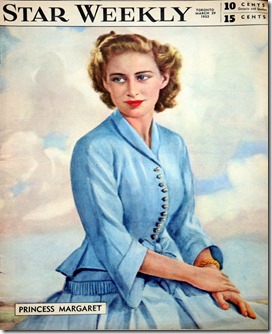
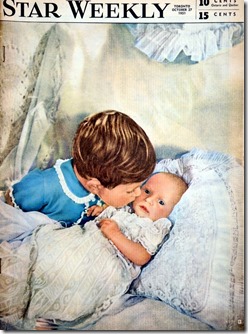
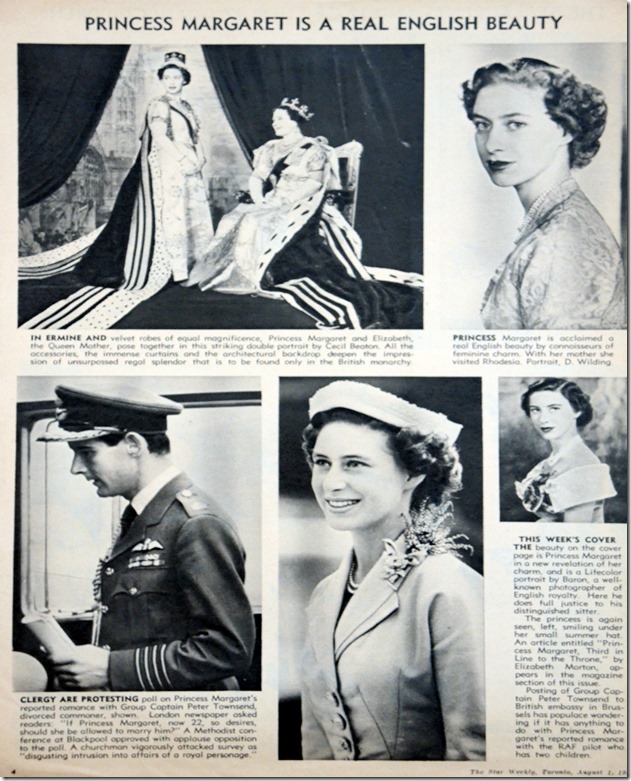

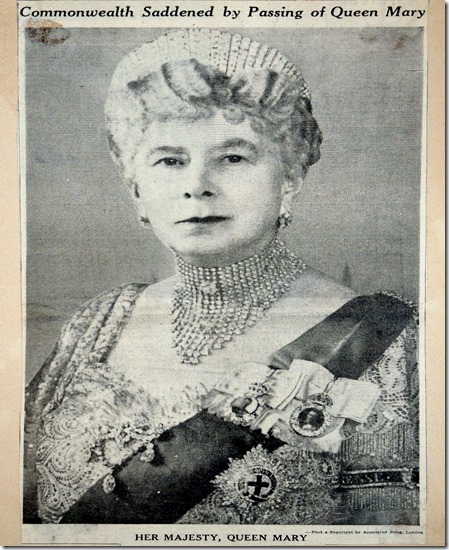
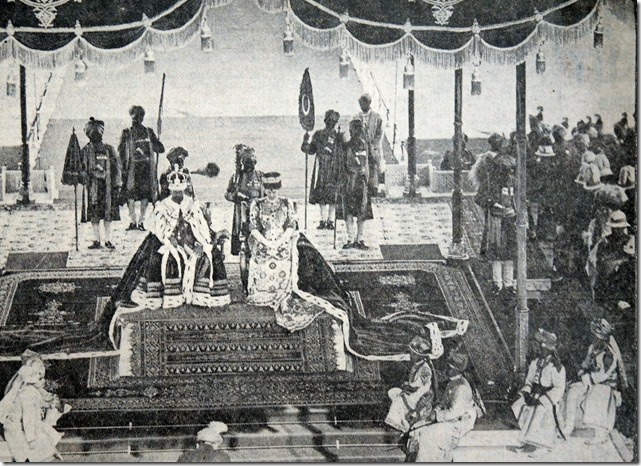
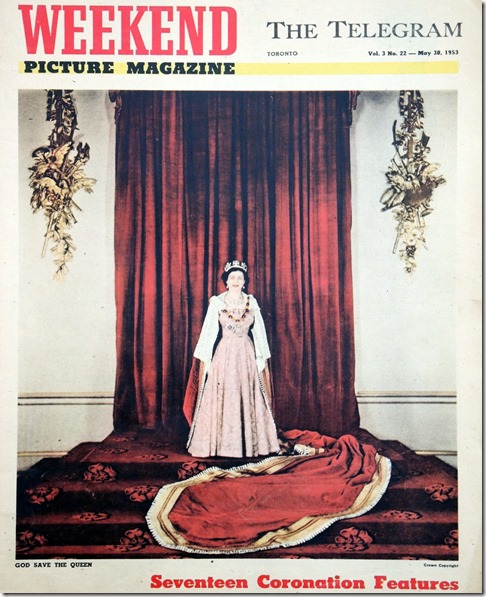
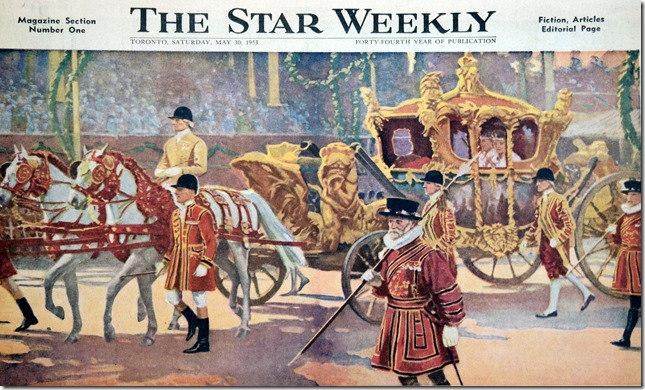
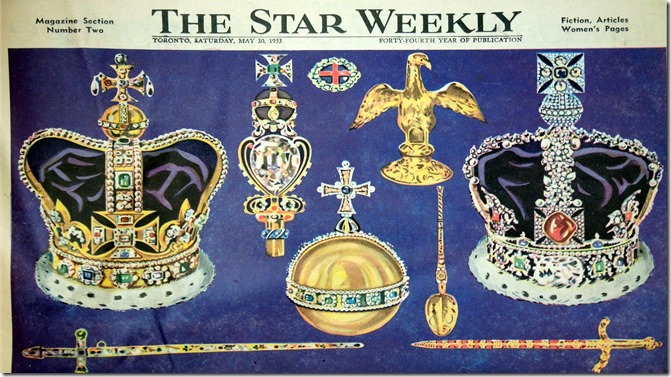
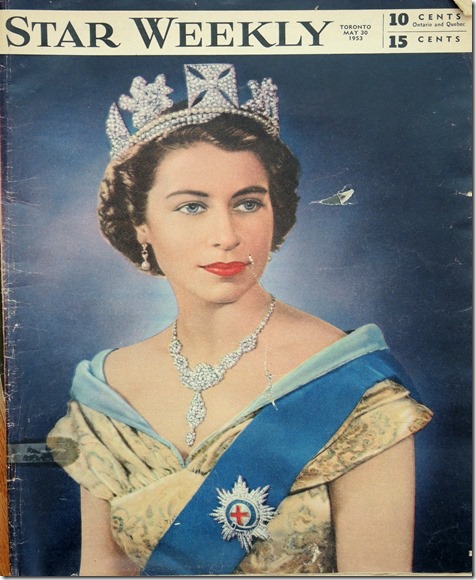
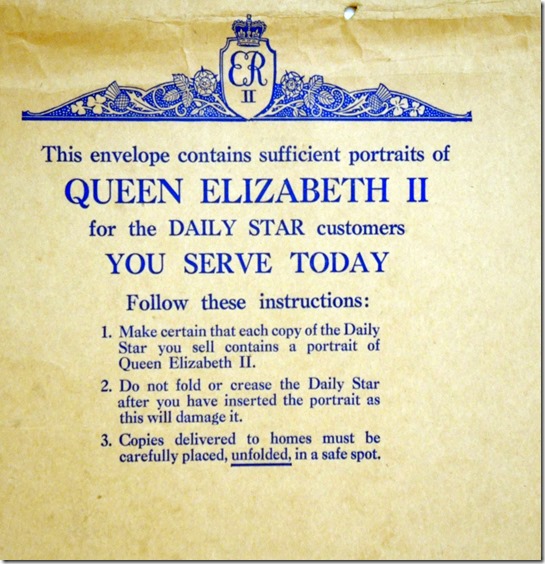
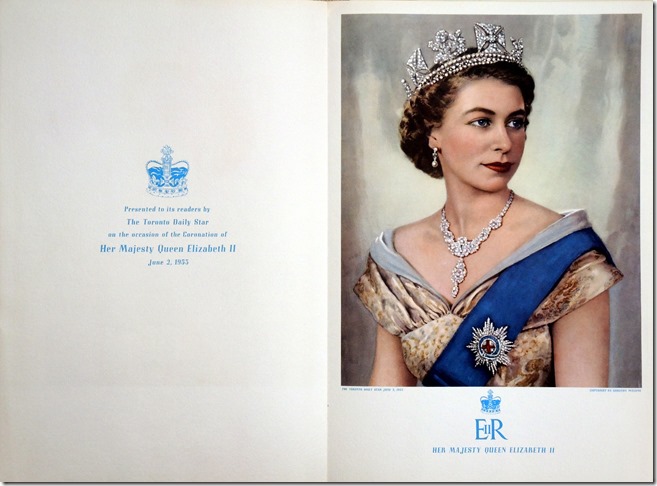
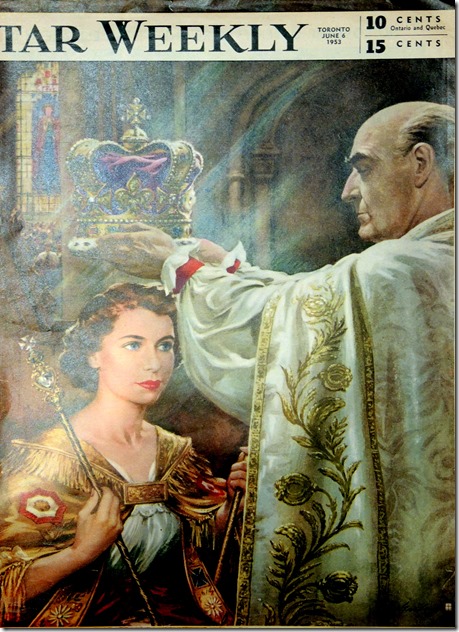
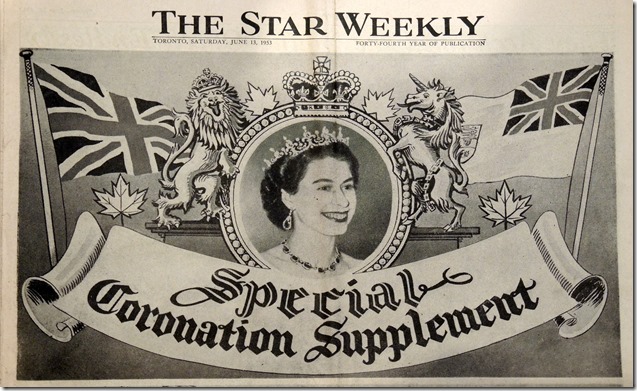
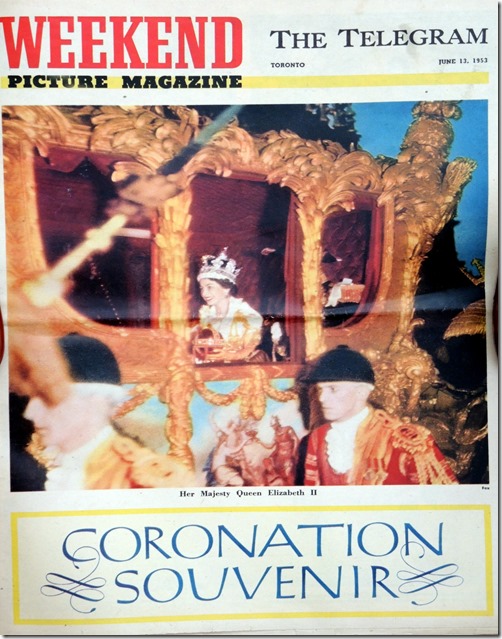
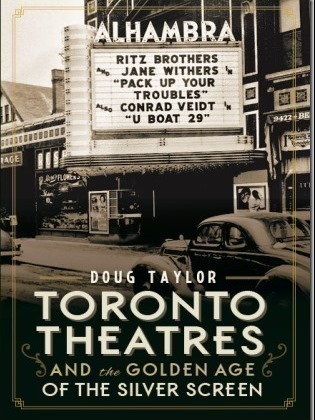


Mr. Taylor, I have one of the inserts for the coronation of the Queen that was in the June 2, 1953, edition of the Toronto Star. I also have two of the inserts from June 20, 1959. All three are in very good condition. Are they worth anything?
Rosalie My name is Helen and I have the newspaper of June 2 1953 The Telegram Long Live The Queen I’m interested if this gentleman you sent a message to got back to you if it was worth anything I’d soo appreciate if you got back to me I actually have many newspapers of the Royal family in those years I bought the box at an auction sale and wonder too if they are worth anything My email is [email protected]. Thanks